The Ultimate Handbook for the Cannabis Flowering Stage
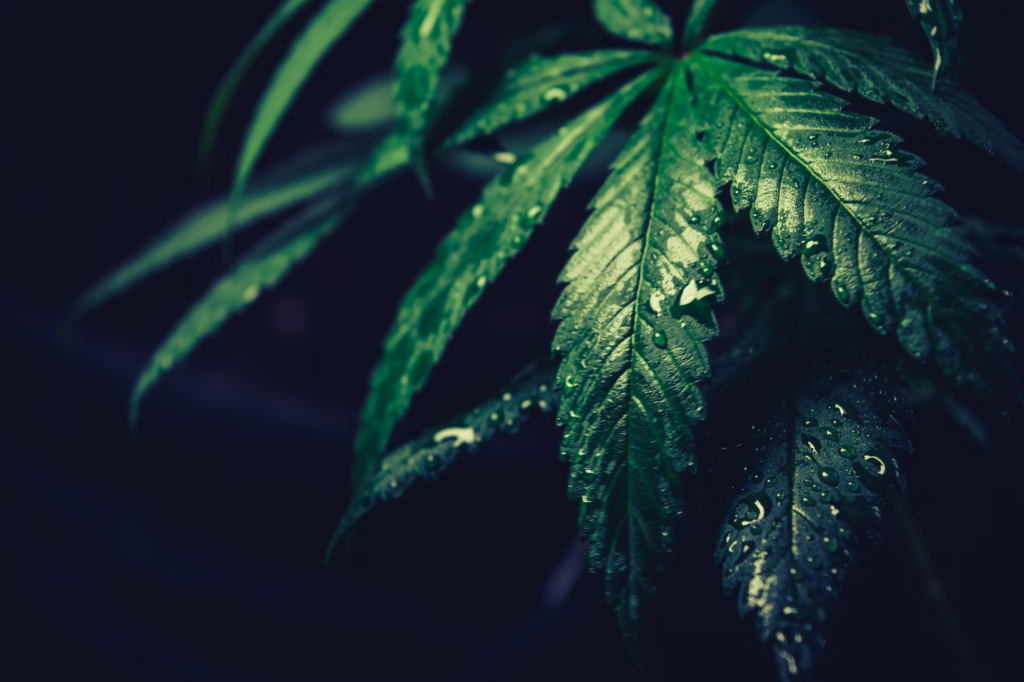
Embark on a comprehensive journey through the entire cannabis flowering phase, starting from the initial week and leading up to the moment of harvest.
Contents:
- Entering the flowering phase
- Weeks 1–3
- Best practices
- Nutrients, lighting, temperature, and humidity
- Weeks 3–4
- Weeks 4–6
- Weeks 6–8
- Don’t rush to harvest
Ah, the glorious bloom phase. After weeks of dedicated care, nurturing your plants, pruning and training them to encourage vigorous vegetative growth, it’s now time to shift your attention towards facilitating their magnificent flowering stage. In this informative article, we will guide you step by step on how to accomplish just that.
ENTERING THE FLOWERING PHASE
The timing of your plants’ transition to the flowering stage is influenced by various factors. Outdoor growers can expect their plants to commence flowering towards the end of summer as the days naturally shorten. Indoor growers, on the other hand, have greater control over the flowering phase. Typically, most growers initiate the bloom phase after approximately four weeks of vegetative growth, but it’s also possible to prolong this phase indefinitely.
As soon as your plants receive reduced light, they instinctively redirect their energy towards bud development rather than foliage growth. To optimize your harvest, it’s crucial to provide them with appropriate nutrients, lighting, and environmental conditions that facilitate this transition and support robust flowering.
In the following section, we present a comprehensive breakdown of the typical eight-week flowering period. Although it’s important to note that flowering times can vary among different strains, this guide will provide you with valuable insights into what you can anticipate as your plants near their harvest phase. Additionally, we’ll explore effective strategies to enhance bud quality and maximize yields during this critical stage of growth.
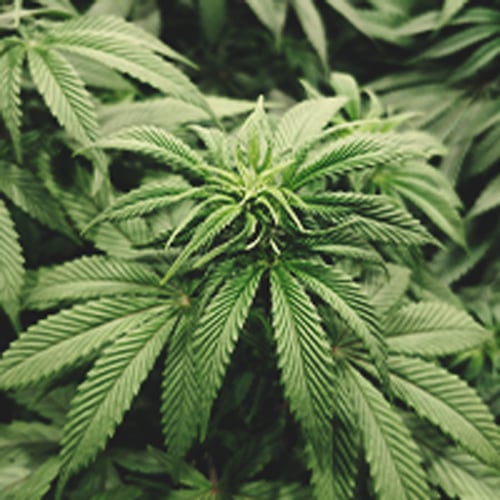 |
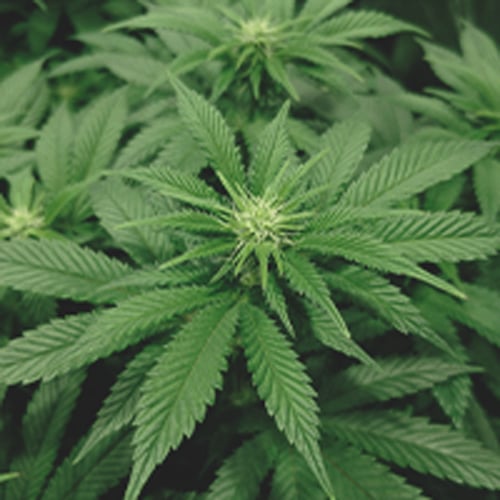 |
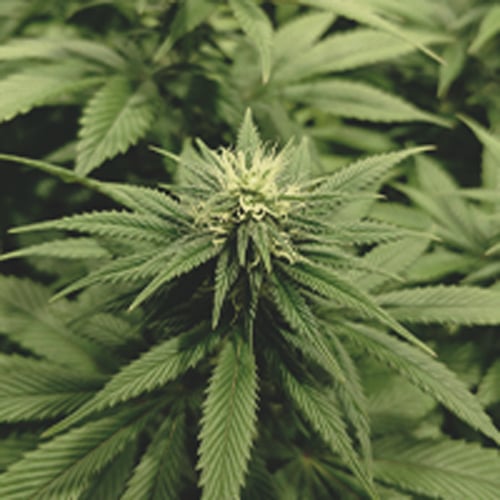 |
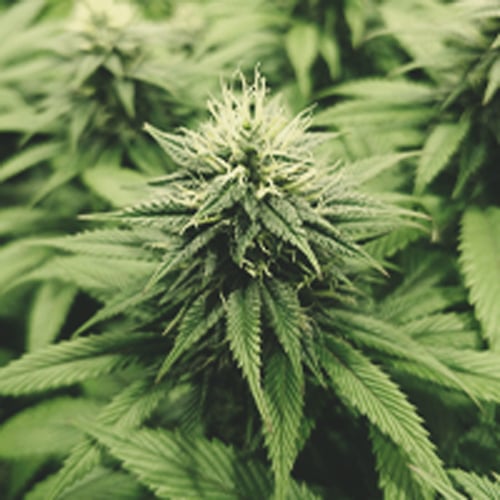 |
| Flowering phase (Week 1) | Flowering phase (Week 2) | Flowering phase (Week 3) | Flowering phase (Week 4) |
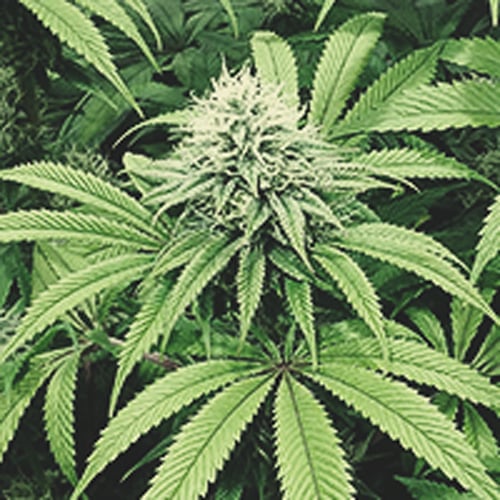 |
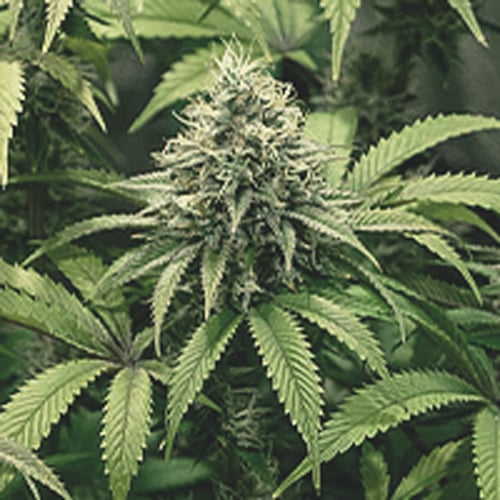 |
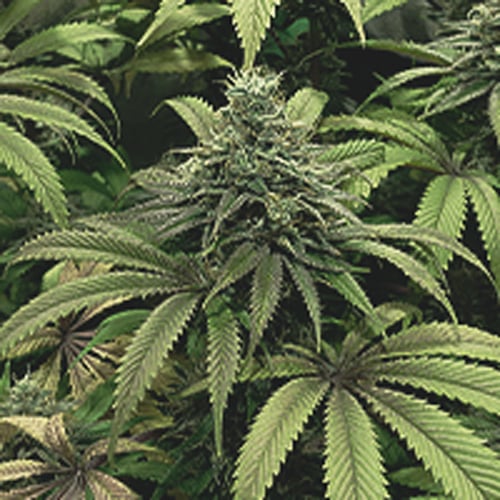 |
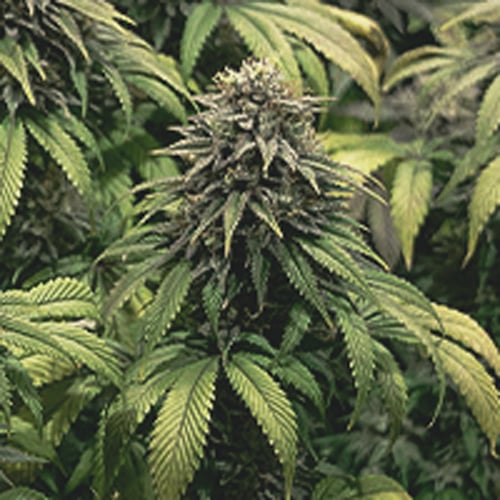 |
| Flowering phase (Week 5) | Flowering phase (Week 6) | Flowering phase (Week 7) | Flowering phase (Week 8) |
WEEKS 1–3
• Anticipated Developments: Flowering Stretch, Pistils (White Hairs), and Aromatic Presence
Misconceptions abound among growers when it comes to transitioning their plants into the flowering stage. Contrary to popular belief, the onset of flowering does not signal an immediate halt to growth and the sudden appearance of buds. In reality, the initial phase of flowering, typically lasting around a week, is characterized by an accelerated growth and stretching of the plants.
Referred to as the “flowering stretch,” this natural phenomenon is driven by the plants’ quest to surpass surrounding vegetation and maximize exposure to sunlight, ensuring optimal conditions for reproduction. Moreover, an increased internodal distance resulting from the stretching allows for greater space for flower clusters and enhanced light penetration. The extent of growth observed during this initial week varies across different strains, with some exhibiting almost a doubling in height.
As the second week of flowering commences, it becomes an opportune time to determine the gender of your plants. Females will exhibit the emergence of elongated, white pistils at their nodes, which serve as the future sites for bud growth. On the contrary, males will manifest round pollen sacs. If you are cultivating regular seeds, it is advisable to promptly identify and separate the males from the females to prevent unintended pollination, unless your intention is specifically breeding.
As week three unfolds, your plants will gradually curtail their stretching and shift their focus towards the prolific development of buds. Although the buds may still be small in size, you will observe the enlargement of calyxes and the initiation of trichome formation, indicating the early stages of resin production.

BEST PRACTICES
• Nutrients: As your cannabis plants transition into the flowering stage, their nutrient needs undergo significant changes. During this initial phase, it is beneficial to provide them with nutrient solutions that have elevated levels of phosphorus and potassium. The specific NPK formula you choose is a matter of personal preference, but it is essential to exercise caution and avoid excessive nutrient concentrations that could potentially harm your plants. When to increase the nutrient dosage is a decision left to your discretion, but we suggest considering it around week two of the flowering period.
• Overfeeding/deficiencies: Transitioning from vegetative to flowering nutrients can be a challenge, especially for novice growers. It is crucial to closely monitor your plants during this period and be vigilant for any signs of nutrient deficiencies or overfeeding, such as wilting, burnt leaves, or yellowing foliage. Paying attention to these indicators will help you adjust and fine-tune your nutrient regimen accordingly.
• LST: Low-stress training (LST) presents an excellent method for effectively shaping and managing your plants during the initial flowering stage, especially when dealing with increased stretching. Implementing LST techniques allows you to achieve an even canopy, promoting optimal light exposure to the lower buds of your plants. This approach ensures that all parts of the plant receive sufficient light for healthy growth and bud development.
• Temperature: During the flowering stage, cannabis plants tend to thrive in cooler temperatures. While the ideal temperature may vary slightly for each plant and according to individual grower preferences, we recommend maintaining daytime temperatures around 26°C and nighttime temperatures between 16-18°C. Particularly, ensuring lower nighttime temperatures is crucial for enhancing the development of buds. Remember to monitor your plants’ responses and make adjustments accordingly for optimal results.
NUTRIENTS, LIGHTING, TEMPERATURE, AND HUMIDITY
| NPK | EC | HUMIDITY | TEMPERATURE (Day/Night) |
| 5-10-7 approx. | 1.2–1.5 | 50–60% RH | 26°C / 16–18°C |
WEEKS 3–4
• Anticipating the Outcome: Enhanced Bud Size and Intensified Aromas
As you approach weeks 3 and 4 of the flowering phase, your cannabis plants will cease their vegetative growth and fully dedicate their energy to bud production. During this period, you will observe significant growth in the size of their flowers, with dense calyxes, abundant white pistils, and a delightful coating of trichomes. Moreover, the captivating scents emitted by your plants will become increasingly distinct and intricate.
BEST PRACTICES
• Feeding: As your plants develop larger buds, their nutrient demands will escalate accordingly. The specific nutrient solution you choose to employ during this flowering stage is a matter of personal preference. However, it is crucial to carefully monitor your plants’ response to any alterations in feeding. A widely used NPK formula during the mid-flowering phase is 6-15-10, providing the necessary elements to support healthy bud growth.
• Humidity and airflow: Maintaining proper humidity levels and ensuring sufficient airflow are vital aspects of a successful cultivation environment. Stagnant and humid air can create an environment conducive to mold, bacteria, and pest infestations. To prevent such issues, it is advised to maintain a relative humidity range of 40-50%. Employing fans or implementing proper ventilation systems will help facilitate air circulation within your grow room, promoting a healthy and pest-resistant environment.
NUTRIENTS, LIGHTING, TEMPERATURE, AND HUMIDITY
| NPK | EC | HUMIDITY | TEMPERATURE (Day/Night) |
| 6-15-10 approx. | 1.5 approx. | 50% RH | 24-26°C / 16-17°C |
WEEKS 4–6
• Anticipated Results: Vigorous Flowering and Abundant, Compact Buds. Aroma Approaching its Pinnacle.
Weeks 5 and 6 mark the advanced stage of flowering for your plants. During this period, you can expect your buds to exhibit significant growth, becoming large, compact, and adorned with abundant white pistils. Moreover, the trichomes will be flourishing, emitting a delightful and potent aroma. If you haven’t done so already, it’s advisable to invest in an extractor and air filter to ensure proper ventilation.
Upon closer inspection, you’ll notice remarkable transformations in your buds compared to a few weeks ago. The calyxes will have noticeably increased in size, while the buds themselves will appear denser and weightier. In the case of fast-flowering strains, some may even be approaching the harvest stage, displaying enhanced maturity with a greater number of trichomes and pistils displaying darker hues.
BEST PRACTICES
• Feeding: Weeks 5 and 6 mark the pinnacle of blooming for the majority of cannabis strains. It is crucial to closely monitor your plants during this period and remain vigilant for indications of nutrient deficiencies or excessive feeding. Consider adjusting your nutrient levels one final time to optimize the yield of your buds. Keep in mind that, at this stage, nitrogen becomes less essential as it primarily aids vegetative growth rather than flowering. In addition to phosphorus and potassium, calcium becomes increasingly vital as flowering plants have heightened requirements for it.
• Stress: During this stage, it is crucial to refrain from subjecting your plants to stress in order to avoid hindering the growth of their buds or, worse yet, inducing hermaphroditism. Stress can prompt female flowering plants to generate pollen and self-pollinate as a final effort to reproduce before their demise. Therefore, it is important to ensure a stress-free environment for optimal bud development and to prevent unintended pollination.
• Support: Prepare to be amazed by the substantial weight of freshly grown cannabis flowers. If you notice your plants struggling to bear the burden of their blooms, it is advisable to employ bamboo stakes, string, or plant clips. These supportive measures will help maintain your plants in an upright position, ensuring they remain steady and preventing any unfortunate toppling.
• Humidity and temperature: To prevent issues with mold or pests, it is essential to maintain humidity levels at approximately 30-40% going forward. Additionally, ensure that your daytime temperatures do not exceed 25°C, while keeping nighttime temperatures in the range of 16-17°C. These temperature and humidity guidelines will help create an environment that discourages the growth of mold and pests, ensuring the health and wellbeing of your plants.
NUTRIENTS, LIGHTING, TEMPERATURE, AND HUMIDITY
| NPK | EC | HUMIDITY | TEMPERATURE (Day/Night) |
| 5-12-9 approx. | 1.5–1.6 | 30–40% RH | 24-26°C / 16–17°C |
WEEKS 6–8
• Anticipating the Final Stages: Bloom Culmination and Harvest Outlook.
Entering the Last Phase: Weeks 6, 7, and 8 of Flowering and Harvest Approach. At this stage, your plants should exhibit compact and solid buds adorned with a generous coating of trichomes. The trichomes will be transitioning from a clear appearance to a milky white hue, with a few turning amber, indicating that the harvest time is imminent. You can confirm this by closely examining them with a pocket scope or magnifying glass. Furthermore, the pistils will continue to darken in color during these final weeks, serving as an additional indication that your plants are nearing readiness for harvest.
Throughout these concluding weeks, prioritizing phosphorus, potassium, and calcium remains crucial for optimal plant nourishment. However, approximately two weeks before harvest, it is advisable to flush your plants with pH-balanced water without any additives. This process encourages the plants to absorb any remaining nutrients, preserving the natural flavor profile of your buds.
As you initiate the final flush, it is normal for your plants to display yellowing leaves, indicating the utilization of the remaining stored nutrients within the foliage.
Once the majority of trichomes have transitioned into a milky white appearance, your buds will be ready for harvest. Harvesting earlier tends to yield a more invigorating and euphoric effect, while later harvests tend to result in a soothing and sedating experience. Although not extensively validated, it is commonly believed that cannabis plants produce increased levels of CBN (a degraded form of THC) and myrcene towards the end of their life cycle.
BEST PRACTICES
• Nutrient flush: It is crucial to consistently prioritize the flushing process by using pH-balanced water approximately two weeks prior to harvesting your plants.
• Humidity: Maintain humidity levels below 40% to prevent issues related to mold or pests. Aim to keep the humidity within the range of 30-40%.
• Bud maturity: Exercise careful vigilance over your plants throughout the two-week flushing period. Utilize the trichome method mentioned earlier to determine the optimal harvest time for your buds.
• 48–72 hours of darkness: In an attempt to enhance the potency of your weed, you may contemplate subjecting your plants to complete darkness for a continuous period of 48-72 hours prior to harvest. This technique is endorsed by certain cultivators who believe it stimulates the production of additional trichomes, thereby yielding more potent weed.
NUTRIENTS, LIGHTING, TEMPERATURE, AND HUMIDITY
| NPK | EC | HUMIDITY | TEMPERATURE (Day/Night) |
| 4-10-7 approx. | 1.7–1.8 | 30–40% RH | 24-26°C / 16–17°C |
DON’T RUSH TO HARVEST
As the final weeks of flowering approach, it is natural for growers to feel a sense of anticipation. However, it is crucial to exercise restraint and avoid harvesting your plants prematurely. Even a seemingly insignificant additional week can have a significant impact on the flavor, quality, and potency of your stash. It is important to maintain close attentiveness to your plants throughout the entire flowering cycle, practice patience, and the reward will be top-tier buds. If you are eager to delve deeper into the last weeks of bloom, including topics such as administering bloom boosters, minimizing noise, calculating flowering phases based on pot size, and more, stay tuned for the upcoming post in our series!






